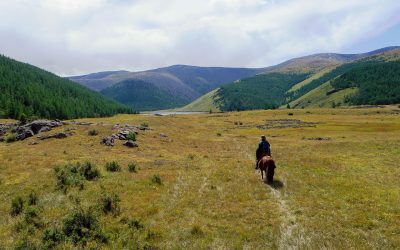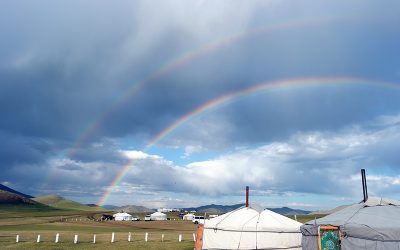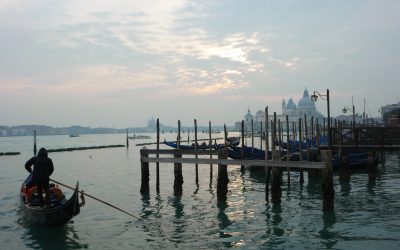Karsten M. Storetvedt research professor at Bergen University has presented his own concept on the evolution of the globe, which includes an alternative mobilistic scheme to Wegenerian drift. Known mostly from paleomagnetic papers, once votary of plate tectonics, now transforms into a partisan of ideas in many aspects anchored in pre-plate tectonic views. If one wonders how present-day geological sciences might appear if plate tectonics were not evident on the scene,
one should read Our Evolving Planet immediately.
This book, written with passion, offers an enormous accumulation of ontological speculation that can hardly be met in other books in geology. In Part 1 the author squares up to the plate tectonics. Not even a single good word has been spoken in favor of this concept. Storetvedt sees plate tectonics paradigm as a blind street in the Earth Sciences, considering subduction a myth, sea-floor spreading a humbug, Atlantic opening a legend, Deccan far-travelled terrane concept unfounded, and, the scientific community a passive herd of self-confident individuals, trapped in the Wegenerian way of thinking.
Part 1 of the book puts forward a long list of arguments in disfavor of conventional continental drift and plate tectonics. It starts from Chapter 1, in which Storetvedt presents the main contradictions in the plate-tectonics concept as seen by him, and calls for a change of scenery in the Earth Sciences. Not all of his reservations, however, are actually the case: for instance Figure 1.2, crucial for Storetvedt’s lines of evidence, depicts Antarctica encircled solely by oceanic ridges, interpreted as rift zones. However, current seismic soundings across the Shetland Islands and the Bransfield Strait clearly indicate the presence of a zone, which may be interpreted in terms of plate tectonics as a subduction sink, Bransfield rift being of back-arc origin. Chapters 2 and 3 recall global theories before Wegener and critically review notions of continental drift and polar wander. In Chapter IV Storetvedt emphasizes ambiguities in paleomagnetic interpretations, thus enlarging a space for further geotectonic solutions and making himself a foundation for forthcoming new global interpretations. According to the author, primary magnetization is in most cases completely overprinted by secondary magnetization and cannot be reliably recovered. Nonetheless, Storetvedt ties paleopoles that “have been satisfactorily settled” to build up his new global tectonics. However, the manner in which he was able to distinguish between “reliable” and “unreliable” paleopoles remains a secret, given the lack of adequate selection criteria, as Storetvedt writes himself.
In Chapter 5 the author argues against the interpretation of marine magnetic anomalies in favor of sea-floor spreading, submitting an hypothesis on the causal relation between the anomalies and fault-controlled ridge-parallel topography. Subsequently he focuses on a critical examination of the outcome of deep-sea drilling across the southern Atlantic, concluding on their misleading usage in favor of the sea-floor spreading hypothesis. The evidence presented in this and the following paragraphs regarding anomalous rocks and rocks ages on the Mid-Atlantic Ridge may come as a shock to uncritical adherents of sea-floor spreading.
The process of subduction is contested in Chapter 6 and considered to be a purely theoretical construction. Benioff-Wadati zones are reinterpreted having formed as contraction fractures while the earth was at a relatively early stage of cooling. According to some laboratory experiments such fractures should form great circles on a spherical surface, and the author demonstrates a corresponding “goodness of fit” in Figure 6.34. However, this fit goodness is no better than that of Bullard and his colleagues for the Atlantic-bordering continents, which has been previously rejected by Storetvedt for a poor quality of fitness. It probably becomes better after restoration of the continents to their pre-Alpine orientations (cf. Fig: 10.9), however the author has not shown a corresponding figure. In Chapter 7 the author presents a chain of observations mostly to intrigue against plate tectonics. This is a feast for those disappointed by the explanatory powerof plate tectonics and those searching their new and save board on a stormy ocean of science.
Part II is subsequently presented in which the author built-up a new theory of the earth. Creating a new perspective for crustal evolution (Chapter 8), Storetvedt argues that in fact we are dealing with the mechanism of continental destruction rather than with the process of continental-accretion, as envisaged by plate tectonics, an idea that reverts to Beloussov’s concept of oceanization, According to Storetvedt intermittent mantle pluming and related vertical mass redistribution within the earth’s mantle was a main factor controlling a periodic spatial reorientation of the planet, giving rise to the phenomenon of Polar Wander, as well as to variations in axial spin rate. The same process would be. responsible for bowlshaped sedimentary basin formation, flood basalt volcanism, and alternating marine transgression and regression. Being subjected to centrifugal forces, pulses of outward mass flow could result in the paleoequator-aligned development of geosynclinal belts. From my perspective, however, the process called “oceanization” is at least as equally difficult to understand as are the causes for drift of the deeply rooted continents. If this process, actually took place, shouldn’t we expect remnants of the continental crust distributed over the oceans in a variety of sizes and keeping a constant distance between them? Aseismic plateaus in the oceans may be a candidate, although satellite geodesy tells us they are on moving plates… And what where the reasons for asymmetry in oceanization for the Northern and Southern Hemispheres, as envisaged by the author?
In Chapter 9 Storetvedt introduces the reader to his new mobilistic system called Global Wrench Tectonics (GWT), exemplified by a geological evolution of the Tethyan basin and followed by a discussion of predominant tectonic features in the Indian Ocean, India, and the African and European continents. As stated by the author, in many places his new system incorporates quite traditional views on the geological evolution of the globe. Mobilism of lithospheric units is reduced to intra-block, vertical axis rotations; the magnitude of rotation depending on block size. Rotations, caused by forces exerted onto the two paleo-hemispheres due to changes in earth’s rate of rotation, induced shearing along pre-existing fractures and led to overall compressive-transpressive stress deformations in the zones involved. Most of a crustal mobilism took place during Alpine diastrophism, considered by Storetvedt an essential tectonic revolution during the history of the earth.
In Chapter 10 Storetvedt explains paleogeography and tectonics of the Atlantic, the Caribbean and the eastern Pacific, while in Chapter 11 he considers Antarctica and Australia in a new paleogeographic/tectonic setting. In Chapter 12 the author interlinks observations stemming from highly diverse fields of the Earth Sciences by means of a GWT cognitive tool. Chapter 13 offers a summary of the main facets of the earth’s history.
Is the GWT paradigm submitted by Storetvedt capable of easing our understanding of the earth’s evolution. Initially, the description of GWT by Storetvedt is purely phenomenological, which makes a detailed scientific discussion very difficult. One may claim that a belemnite is a thunder stone and such a working hypothesis may endure as long, as an entire bio-geological context will eventually reduce it to an absurdity. I remain unconvinced that his theory of lithosphere evolution explains problems better than plate tectonics does, and that it eliminates problems unsolved so far altogether, as often mentioned by the author. The author denies the lateral mobility of crustal plates, however,if so, why are space geodesy measurements in such favorable agreement with evaluations of plate velocities offered by a sea-floor hypothesis? Storetvedt argues that these measurements favor his model, although data he presents (see his Fig. 12.16) clearly differ from that I know (e.g., D. G. Howell “Tectonics of suspect terranes”, Fig 51). Nevertheless some points indicated by Storetvedt are indeed intriguing (e.g., pre-Cretaceous rock ages found in the Mid-Atlantic Ridge or Barents Strait problem), but enigmas concerning the evolution of primary continental crust (expansion or destruction), polar wander (true or apparent – may be both?) and plate mobilism lie on both sides. A crucial element pertaining to vertical mass transport in the mantle is common for both concepts and it would be considerably better for the book if the author used his unquestionable intellect and knowledge to formulate a new synthesis, instead of submitting a plate tectonics counter thesis alone.
The book is clearly not mainstream, so I encourage its purchase. Well edited, with many (still not sufficient) original figures, the book offers abundant reflective information. As a new tome, however, the book is too complicated in its narrative style. Particularly irritating are frequent repetitions and a specifically angular perspective in which supportive arguments for the author’s concept create a foreground. The author refers to many practically forgotten papers, although at the same time he overlooks many important and relevant recent papers, D. Anderson’s works on the theory of the earth being the first on the list.
The book will be valuable for graduate students devoted to the earth’s history and practicing dialectic thinking, as well as for all who are curious about an unorthodox approach in geology. As is customary, time will be the best judge of Karsten Storetvedt’s concept; the geoscientific community being the jury…
Marek Lewandowski
Institute of Geophysics
Polish Academy of Sciences
Ks. Janusza 64
01-452 Warsaw, Poland




